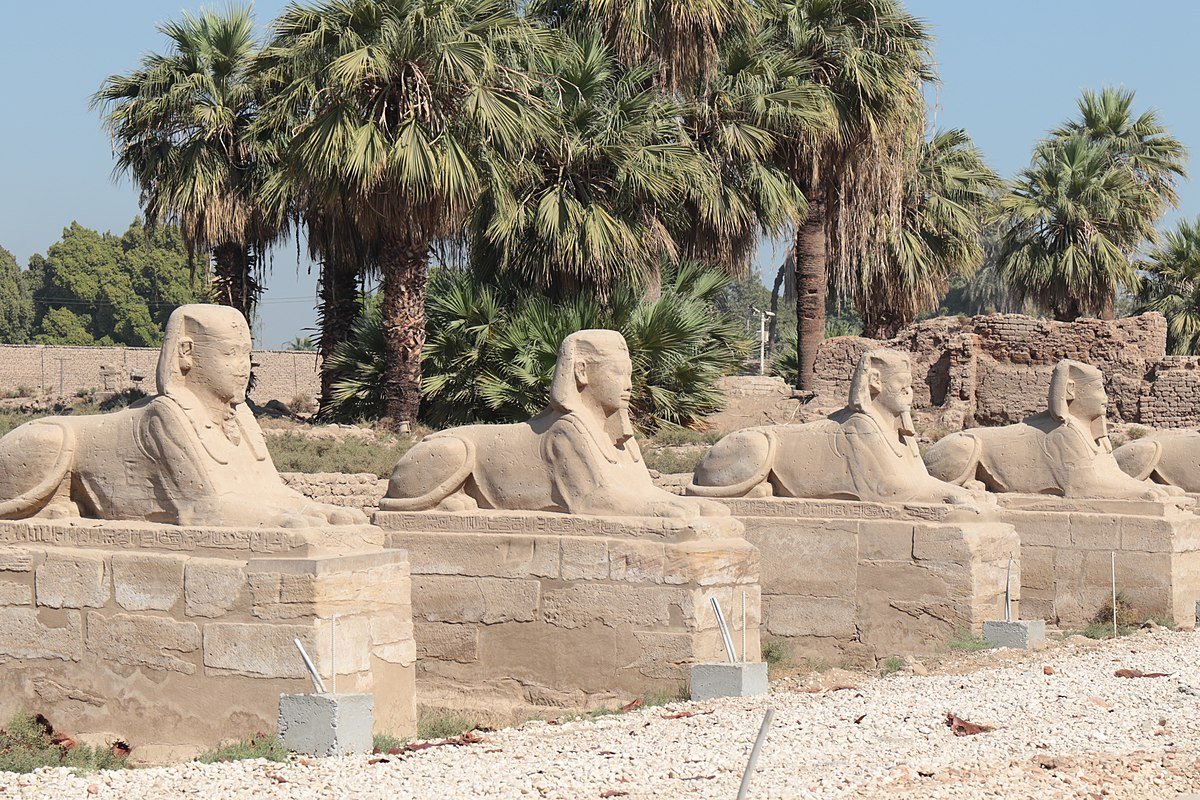Egypt’s Avenue of the Sphinxes: Another of al-Sisi’s Red Herrings
The restoration project for Egypt’s Avenue of the Sphinxes is complete. (Wikimedia Commons)
After a four year restoration project, Egypt’s Avenue of the Sphinxes—a 3,400 year old, 1.7 mile long road connecting temple complexes in the cities of Luxor and Karnak—opened with a lavish ceremony on November 25. Egyptian President Abdel Fattah al-Sisi attended the ceremony, which featured hundreds of performers and a historical reenactment. The restoration of the Avenue is only one of a series of historical infrastructure projects in the country, and other projects, such as the Grand Egyptian Museum forecasted to open in early 2022, are poised to bring many new tourists (and their dollars) into the country each year. But while Egypt’s big projects may aim to increase tourism revenue and positive press coverage, they mask the al-Sisi government’s coordinated efforts to silence opposition and increase its hold on power.
The avenue, also called the Road of the Rams due to the hundreds of ram and human-headed sphinxes that line its length, was discovered in 1949. Luxor is already home to various other archeological sites, such as the Valley of the Kings, which is home to multiple famous sarcophagi (including that of Tutankhamun.) In recent years, the Egyptian government has focused more on spending to increase the country’s tourism sector, which in 2019 made up 15 percent of the country’s GDP and 9.5 percent of the workforce. However, tourism revenue in Egypt shrunk from $13 billion in 2019 to only $4 billion in 2020, due to the effects of the COVID-19 pandemic. The grand opening of the Avenue of the Sphinxes served to once again highlight Egypt’s historical value and aim to draw tourists back to the country.
Further steps to increase press coverage by the government included a visit by British Prince Charles and Duchess Camilla on November 18. It was the couple’s first trip outside the United Kingdom on royal business since the beginning of the pandemic, and they toured the pyramids and the nearly completed Grand Egyptian Museum. By inviting foreign royals, investing millions in archaeological refurbishments, and even building a new capital city, the al-Sisi government “has a makeover planned for practically all of Egypt.”
However, since he came to power in a coup in 2013, al-Sisi’s military-backed regime has been clamping down on human rights and increasing control. Before the 2018 presidential election, multiple opposition candidates were arrested, and constitutional amendments passed in 2019 allowed al-Sisi to extend the end of his term from 2022 to 2034, in addition to increasing the power of the military. According to Human Rights Watch (HRW), al-Sisi’s regime has violated the International Covenant on Civil and Political Rights, the African Charter on Human and People’s Rights, as well as other international human rights treaties. In addition, HRW has deemed that the country’s elections are neither free nor fair, as voter turnout continues to fall in each election and al-Sisi’s share of the vote continues to increase (with rates of 41 percent and 97 percent respectively in the 2018 election).
Why focus on a national makeover? Deputy director at HRW for the Middle East and North Africa Michael Page says that the silence and inaction from Egypt’s allies encourage the repression of human rights. By renovating archaeological sites, focusing on tourism, and building the largest archaeological museum in the world, al-Sisi is able to garner largely positive press coverage; by being portrayed in a positive light, he is able to prevent the international press from focusing on the negative aspects of his regime. So while those who care about history may be tempted to simply praise projects like the Avenue of the Sphinxes’ restoration for their historical value, to separate the projects from the government that funded them ignores why they occurred at all.

